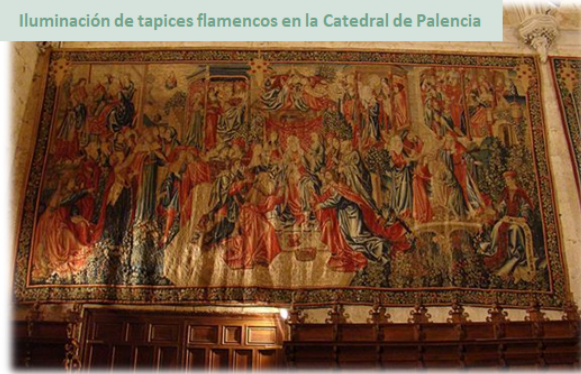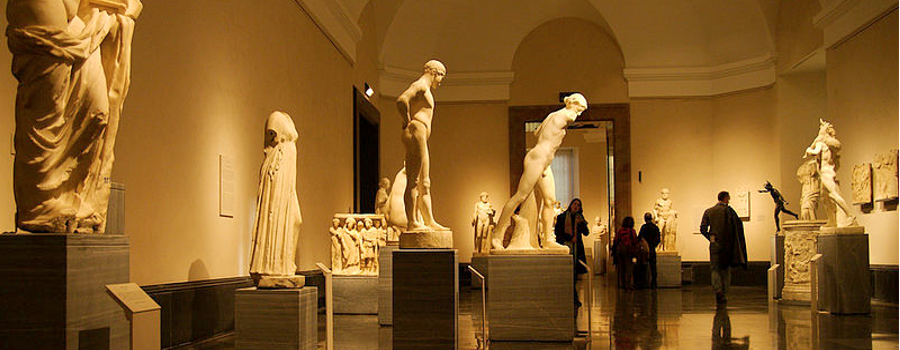In two previous posts [When the Historic Buildings Talk (I) and (II) apart from making clear the importance of the conservation of the built heritage as long as describing the environmental factors that influence such conservation, we have already faced the temperature and the humidity as the two key factors to be monitored. Anyway, and in case you forgot about it, there are other aspects that also must be monitored to avoid deteriorations resulting in expensive and time consuming restorations:
- Lighting (natural and artificial).
- Pollutants.
In this post we are going to get involved with lighting, which mainly affects the movable goods that decorate or treasure the historic buildings. Be patient, pollutants are left for the next (and last) delivery.
Illumination can be of natural origin (coming from the sun) or artificial (coming from electrical sources), but in any case is an electromagnetic radiation that covers three ranges: infrared (IR), visible (VIS) and ultraviolet (UV). We usually call “light” the visible part to human eyes. UV radiation has a smaller wavelength than VIS and is the one with the highest associated energy. IR radiation has a longer wavelength than VIS radiation and is less energetic. Both UV and IR radiations are not necessary “to see”, but they do influence the deterioration of the materials.
When a work of art is illuminated, whether it is a painting, a polychrome, a tapestry or a parchment, the whole range of radiation (IR, VIS and UV) is absorbed by the materials of which it is composed. This radiation is associated with energy capable of altering and degrading the molecular structure of many materials, especially the most “perishable”, such as those of organic origin (textiles, pigments, leather and paper).
The UV component (highest energy), is the one with the greatest capacity to alter the materials, disintegrating and weakening, producing their yellowing. The VIS component is able to decolorize the most sensitive pigments. On the other hand, the IR component produces a heating effect that accelerates certain chemical reactions.

Thinking about this, it seems that for the assets we keep in museums, churches, hermitages, castles, palaces, archives and libraries, it would be best to preserve them in the dark. However, for study, conservation, and especially for exhibition purposes, some kind of illumination is required. Following the criteria of the IPCE, which establishes the Spanish National Preventive Conservation Plan (PNCP), these are the parameters to evaluate the risks derived from illumination:
- Intensity of artificial and natural sources.
- Exposure time to the illumination.
- Spectrum (range) of emission of the artificial light sources, knowing if they emit in not-visible radiation bands.
- Incidence of natural illumination, its orientation, and whether the radiation is direct or diffuse.
- What lighting control measures exist on-site.
In turn, the assessment of the damage caused by lighting must take into account the following aspects:
- Since this damage is cumulative, we should flee from high levels of illumination, but maintaining a commitment for adequate vision. By giving concrete values: 50 lux for the most sensitive materials and 150-200 lux for medium-sensitivity cultural assets.
- Damage is determined by the amount of illumination, i.e. the intensity of illumination during the time an asset is exposed (lux / h). Thus, keep in mind that the damage in the case of high illumination levels with short exposures would be the same as with low levels and longer exposures.
- The degradative effect of lighting also depends on other environmental factors such as humidity and air pollution.
Therefore, where we place our cultural assets, how natural light affects them, and with what kind of lamps we focus on, are critical aspects for their proper conservation (see Figure). CARTIF offers advice and tailored solutions based on a proven experience of more than 20 years in applied research to Cultural Heritage.
- Artificial Intelligence and Cultural Heritage: A Promising Alliance (With Nuances) - 7 November 2025
- The black gold of Castilla y León: its Cultural Heritage - 5 December 2024
- Talking about everything visible and invisible (II) - 30 August 2024
